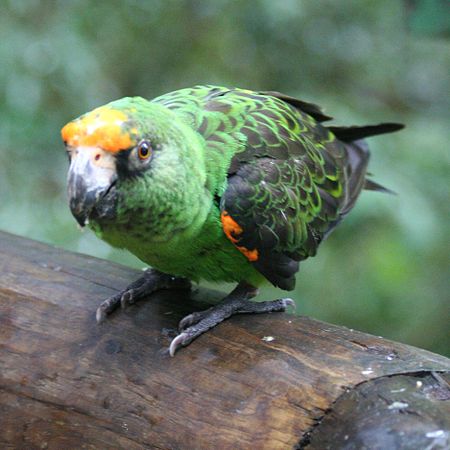Type the name of the breed you're looking for below
[wpdreams_ajaxsearchlite] Don't see the breed your're looking for? Click here and let us know!
Jardine’s Parrot
| Origin | Jardine's Parrot is endemic across wide areas of Africa. |
| Size | This species can grow up to 11 in(28 cm) |
| Lifespan | Can live 15+ years |
| Noise | Moderate |
| Characteristics | It is mostly green and has a short black squarish tail. Black feathers on the head, neck, back, and wings have lighter green edges giving a scalloped appearance. The lower mandible is dark grey and the upper mandible has a horn coloured base and a dark grey tip. The irises are red-orange, the eye rings are pinkish-grey, and the legs are grey-brown. The amount of red or orange on the fore crown, the bend of the wing, and thighs varies in the three subspecies but is absent in all young birds - juveniles having a dark smoke appearance above a paler beak and brown irises. The adult male and female are identical in external appearance. |
| Abilities | Like most parrots, this species can mimic and remember several phrases or words. |
| Interaction/Time Requirements, Diet, Supplies Needed | Parrots do well in aviaries and cages. They don't like to be in crowded spaces and will sometimes be aggressive towards other birds if they don't have enough space. Parrots can also be hand reared, provided that they have a large cage and are taken out of their cage on a daily basis to prevent boredom, as it may result in the parrot pulling out its feathers to occupy itself. They require a warm habitat for the winter months. Do not allow your birds outdoors until all signs of frost are gone. Space is important and indoor cages should be as large as possible. A large cage is required even if the bird is going to spend lots of time out of its habitat with you. Their wild diet includes fruits, seeds, nuts, berries and cultivated crops. They will also readily accept meal worms and other insects. You need to change food and water twice daily, and clean the cage at least once a day, replacing toys and broken climbing branches. |



